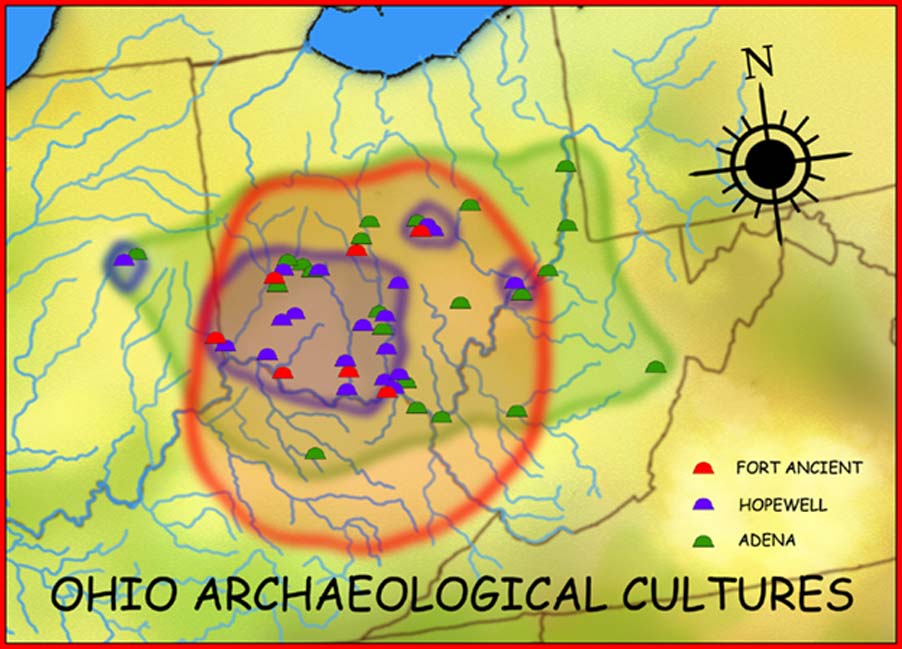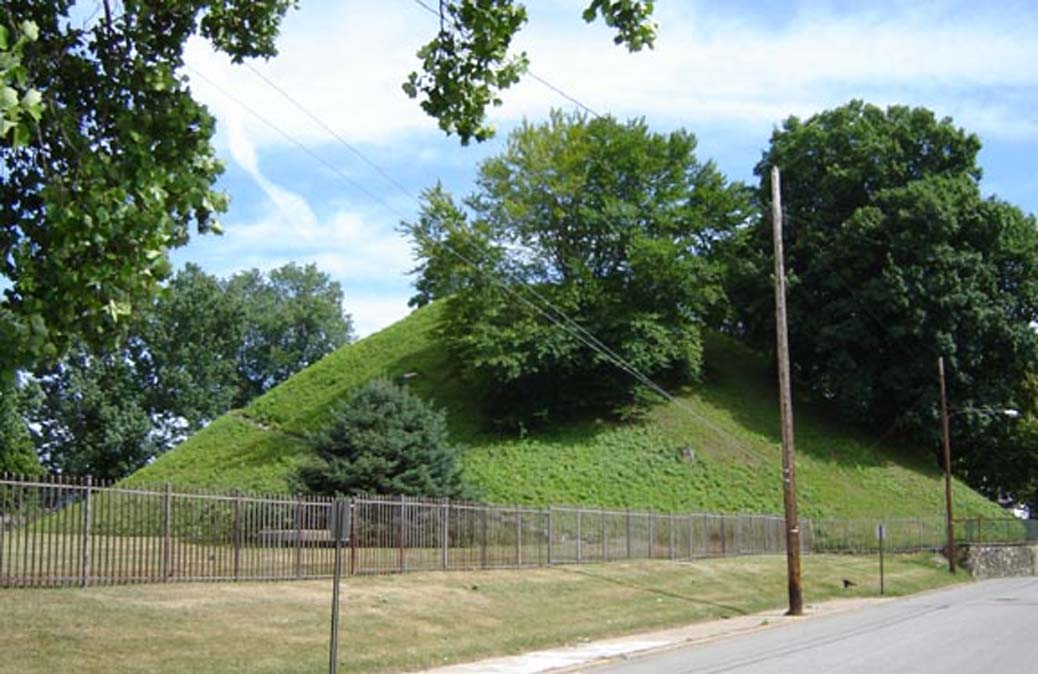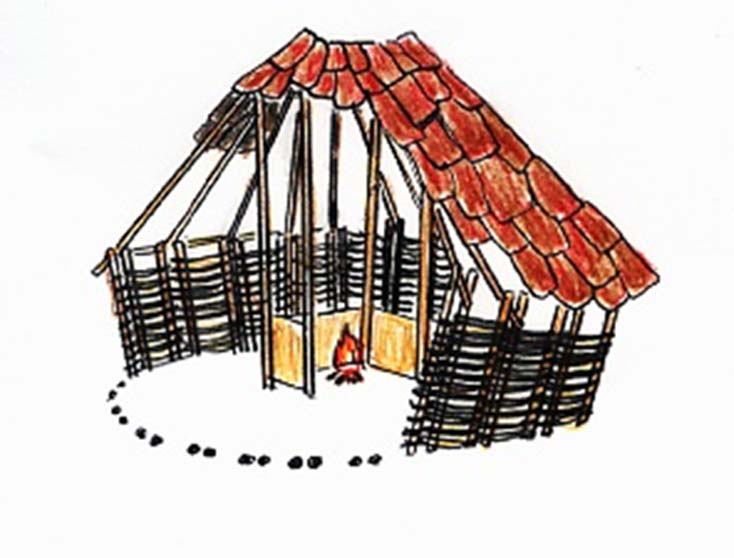
Ghost Talkers and Puma Men: Adena Totemism and the Shamans of the Early Woodland Period
The people of the Adena Culture are widely regarded as the first builders of mounds and earthworks in the Ohio Valley.
By conventional dating the culture spans the period of 1000 BC to around 300 AD. Adena people built conical burial mounds ranging from a few inches to nearly 70 feet (21 meters) high, as well as ceremonial enclosures consisting of earthen banks with interior ditches flanking the interior of the walls. The enclosures were usually circular in shape with an average diameter of around 200 feet (61 meters), but Adena also built numerous rectangular or squared earthworks.

Geographic distribution of the Adena (800 BC–100 AD), Hopewell (200 BC–500 AD), and Fort Ancient (1000–1750 AD) cultures. (Heironymous Rowe/CC BY-SA 3.0)
The Adena buried their honored dead in sub-mound pits, log tombs, and occasionally in elaborate timber structures within the mounds. Artifacts found with the Adena dead include copper bracelets, beads, rings, daggers, gorgets, and headdresses, as well as shell, flint and slate objects and red ocher.

Adena Mound. West Virginia - Moundsville - Adena Indian Mound 100 BC -500 AD. (Mike Sharp/WT Shared/CC BY-SA 3.0)

A sketch of a timber Adena house. (CC BY-SA 3.0)
There is also a particular class of artifacts from Adena tombs, which offer a glimpse into the realm of that ancient ritual specialist, the shaman.




